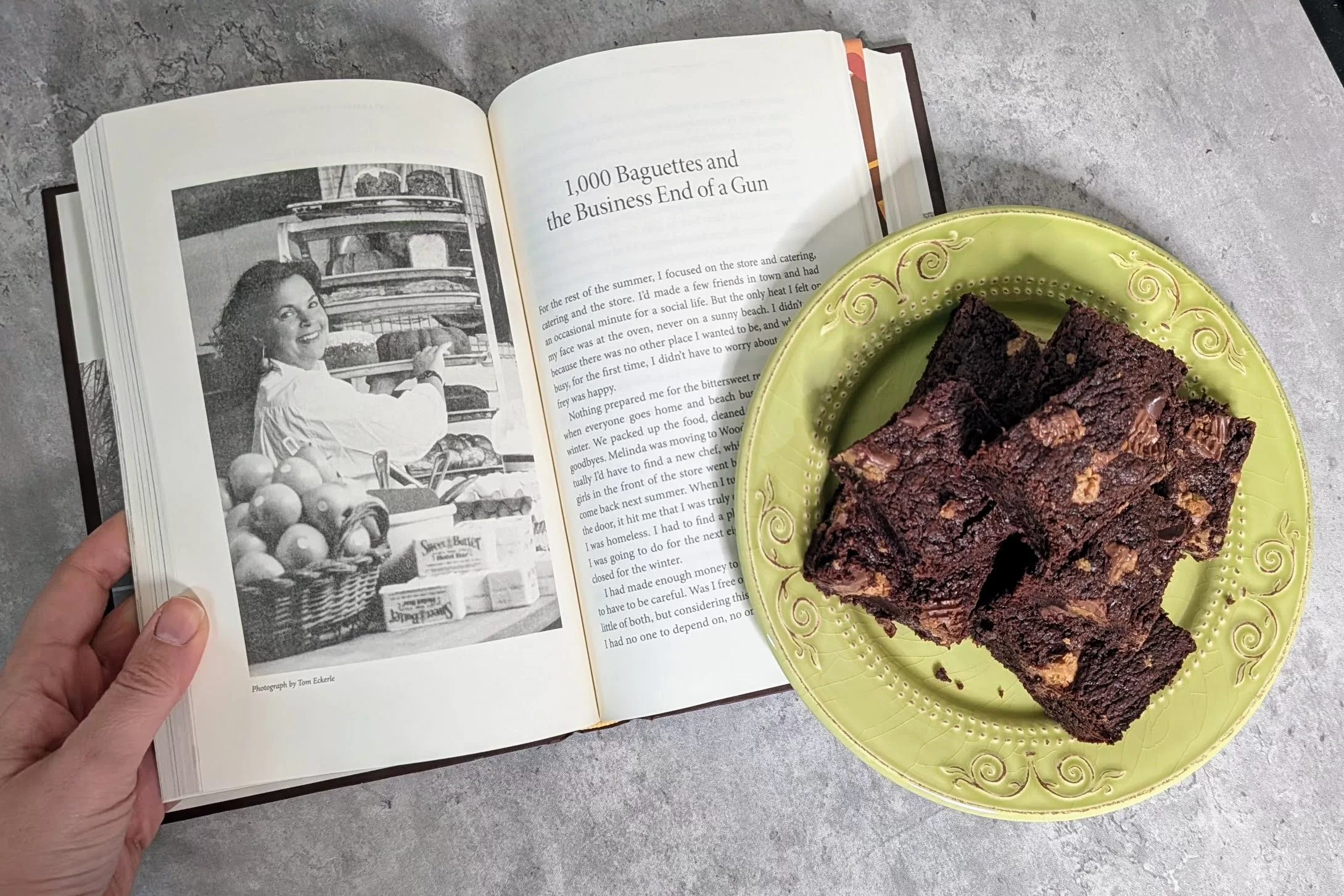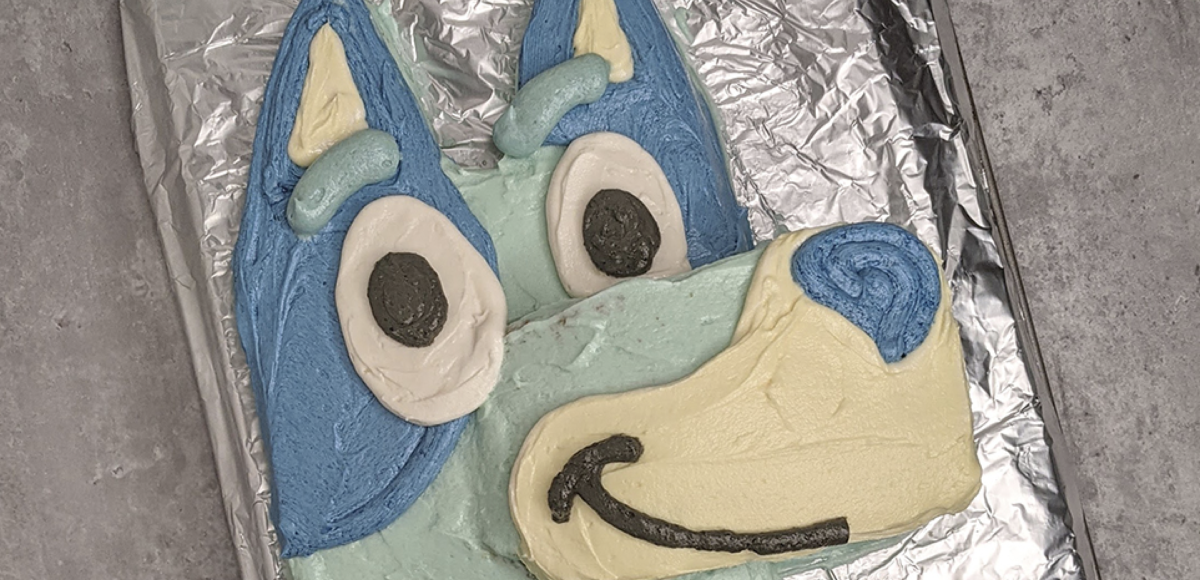This post may contain affiliate links. Every link is hand-selected by our team, and it isn’t dependent on receiving a commission. You can view our full policy here.
Despite studying food writing at New York University and taking multiple intensive courses at the International Culinary Center, when I finally landed my dream job in food media—and was offered the chance to create a dish from scratch and share it with the world—I wasn’t sure where to start. How do you develop a recipe? Is there a proper, formal, specific way to do so?
Yes, somewhat—there’s a general process, but how you go about it varies from person to person.
Nobody breaks down how to develop a recipe better—and easier—than the Barefoot Contessa herself. In her memoir, Be Ready When the Luck Happens, Ina Garten describes her creative process, which really comes down to a few key steps.
How Ina Garten Develops Recipes
1. She Defines Her Idea Using 2 Parameters
For Garten, inspiration comes from her life’s experiences, more so than chasing food trends. “When I decide to work on a recipe—it could be one I remember from the past or something I tried for the first time yesterday—I start with the idea of the dish I would like to make,” she writes in her memoir.
More specifically, with that dish in mind, she homes in on defining what its ideal flavor (what it tastes like) and texture (what it feels like) should be. “If I have something specific in mind—both flavor and texture—I have a much better chance of getting it right.”

2. She Researches What’s Already Out There
“I might look through the cookbooks in my library and read everything I can about similar dishes,” Garten expands.
This is similar to my own process, as well as others I’ve known. You look up the key techniques, ingredients and cooking methods, and start thinking about which ones will lead to the specific flavor and texture you’re looking for in your version of the dish. (For example, you may prefer a fork-tender, robustly garlicky meatball, whereas someone else may prefer the crisp, caramelized exterior of a nice sear, with a meatier center.)
3. She Starts Testing Out Iterations, One Change at a Time
From there, it’s time to map out a rough draft of the recipe, which is exactly that—a draft, subject to review (and, at times, several revisions). “I’m really like a scientist and detective, experimenting until I find the perfect combination of ingredients,” Garten says. “Each time I make a dish, I might change one variable to see the effect—What would happen if I added cognac to this sauce? Or more baking powder to this cake batter?“
What she doesn’t share in her memoir but is equally crucial to the Barefoot Contessa method is that she has an assistant test her recipes—ideally someone without a ton of cooking experience, either. In a 2016 Buzzfeed News feature, for example, the reporter observes how Garten watches her then-assistant, Lidey Heuck, prepare a frisée salad. She shows Heuck how to turn the plant inside-out to reveal its core before removing it—a step she didn’t think of describing until she saw Heuck’s confusion about prepping it.
“Ina then walked away, telling Lidey she’d like her to make the eggs by herself, to make sure the instructions make sense,” the writer recalls. In doing so, she ensures her creations are truly accessible to home cooks of all experience levels—the hallmark of a great recipe.

4. Garten Has a Few Key Considerations to Determine If the Recipe Is “Done”
“My goal in finding the right flavor is to make the dish taste as good as it can taste with as few ingredients as possible,” Garten explains in Be Ready When the Luck Happens. “Every ingredient has to earn its place in the recipe. It’s not so much about adding flavors as about making the intrinsic ingredients taste like the best versions of themselves. How can I make chicken more ‘chicken-y,’ or chocolate more ‘chocolate-y’?”
That starts with an Ina-ism: Opting for the “good” stuff. She tries to snag the highest-quality, in-season ingredients whenever possible, while knowing that that’s not always possible for those trying out her recipes. With that in mind, she looks for ways to enhance those key ingredients’ flavors. That’s where technique often comes into play.
A grocery-store plum tomato, for example, has no flavor at any time of year, she argues. “If you bite into a raw one blindfolded, I’m not even sure you could identify it as a tomato,” Garten writes. “But toss it in olive oil, sprinkle it with salt and pepper, and slow-roast it to caramelize the sugars in the tomatoes, and they taste like the best summer tomatoes you’ve ever eaten.”
To that end, as much as Ina likes to enhance a dish’s flavor, she tries to stick to three main flavors (“my brain just can’t process more than that without becoming overloaded”), ensuring that they’re all balanced. And that any dish, whether predominantly savory or sweet, has “an edge” to it.
“Savory things tend to need something acidic, and sweet things tend to need something bitter to give them more depth of flavor,” Garten writes. “If you’re making something with sweet chocolate, vanilla is an important addition, because it’s a little bitter, to balance the sweetness. … For my Outrageous Brownies, the bitterness of three tablespoons of instant coffee granules cuts the sweetness of the chocolate and makes the overall flavor so much more complex and interesting.”

So, Do Garten’s Recipes Live Up to Her Method?
Ina’s Outrageous Brownies, Reviewed Using Her Recipe Development Method
Those Outrageous Brownies are a great case study in the evolution of Garten’s process—and an even better excuse to whip up a batch of brownies. She shares the recipe in her memoir, but you can also find it online. The instant coffee intensifies the cocoa flavor, resulting in a dessert that’s more rich than sweet (something Gideon’s Bakehouse founder Steve Lewis would approve of). It doesn’t impart any coffee flavor, just as the vanilla isn’t intense enough to make it taste so; they’re both subtle ways of rounding out the flavor, so it doesn’t taste cloying.
You’ll reach for milk, but not because you need to wash that sugary flavor out of your mouth right away. You’ll just want a palate cleanser between bites.
There Is One Thing I’d Change
However, I do think this recipe could benefit from a timing or visual cue for its third step. You set up a double boiler (aka bowl resting above a pot of boiling water, so the steam gradually melts what’s inside the bowl without burning it) and melt the butter, pound of chocolate chips and unsweetened chocolate. Easy enough. But then the recipe simply says, “allow to cool slightly,” before stirring it into a mixture of eggs, coffee granules, vanilla and sugar. You bring that to room temp before heading to the next step.
But it’s the “cool slightly” that gets me. How cool is that? Do I wait 15 minutes or 5? Even if most people don’t have a candy or food thermometer, how much higher than room temp is key—80ish degrees? 90? That’s a bit clearer to gauge than “slightly,” because knowing when to mix cool eggs into warm chocolate is critical. Too soon, and you’ve got scrambled eggs or glossy, stringy bits in your otherwise fudgy brownies. Nobody wants that.
It’s worth noting that this recipe was printed in 1999, well before she hired Heuck and started working with assistants who weren’t as familiar with her recipes. It makes sense, then, that this step isn’t as clear as her future ones.
If you watch an old Food Network demo of the recipe, you’ll see that while Garten says the egg mixture shouldn’t be “beaten,” she does whisk it, giving it a vigorous enough stir to thoroughly combine the yolks and whites into a uniform, buttercup-yellow mixture. Then, when she’s ready to add the melted chocolate and butter mixture to it, it’s worth noting that the chocolate bowl has cooled to the point that it’s still viscous, yet Garten can easily pick it up and hold it, unaided, as she combines everything. No oven mitts or tea towels needed; it’s that cool.
Still, the End result Is Incredible
Dozens of reviews online praise Ina’s Outrageous Brownies without ever questioning this step, so maybe my initial confusion made me an outlier. Once I figured out the technique—and heck, even with my initial, botched batch—the flavor and texture are every bit as decadently fudgy as you’d hope from a brownie billed “outrageous.”
They’re worth testing—and tinkering with—to adapt them to suit your tastes. Plus, it’s a great way to try your hand at Garten’s recipe development method…as if you needed an excuse, right?
You can find Be Ready When the Luck Happens on Amazon and at most major bookstores.




